Asks Colin Benjamin
What does Darren Sammy’s continued presence as captain and the absence of opening batsman Chris Gayle along with a few other senior players mean for the West Indies team?
Nothing good!
After a promising start to this first test against India, the team has surrendered the initiative after only two day’s play.
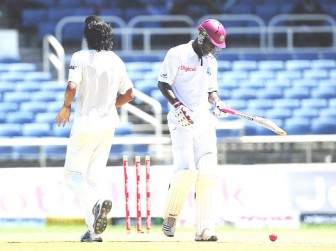
The team is missing Gayle, Jerome Taylor and Dwayne Bravo for various reasons but the biggest problem with the team surrounds its captain.
It is no secret that many disgruntled fans are of the opinion that Sammy cannot command a place in the team were he, in fact, not the captain.
Given its present state, the immediate and long term future of West Indies cricket on the field is uncertain.
At the crux of the matter is the divisive political on-going wrangling between the WICB and WIPA with the former stating recently that it will have nothing to do with WIPA president Dinanath Ramnarine in future and WIPA countering that Ramnarine will remain a part of WIPA’s negotiating team against the WICB.
Free Fall
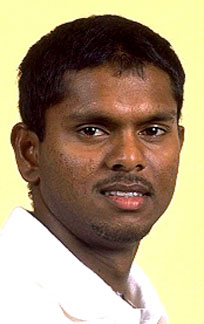
The free fall of West Indies cricket started with the defeat to Australia during the 1995 tour of the Caribbean.
It has not stopped.
The 1995 series defeat was the first loss in 15 years for the Calypso Cricketers and brought the curtain down on a glorious era in which the West Indies dominated test cricket under captains Clive Lloyd and Sir Vivian Richards.
Now, series are being lost with alarming regularity especially to teams ranked higher than the West Indies in the International Cricket Council’s pecking order.
The losses continued with overseas white washes in Pakistan 1997 and South Africa 1998 and regional fans have become almost immune to the drubbings various regional sides have continuously received over the past decade in one day and test cricket.
Moments of
brilliance
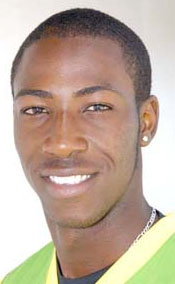
But it has not been all gloom and doom; there have been moments of team and individual brilliance.
There was Brian Lara’s breathtaking batting feats against Australia in 1999 when he almost single handedly won for the Windies two tests against Australia in that classic series which ended 2-2 after Australia won the final match.
There were also Lara’s world-record test batting performances of 375 and 400 not out in Antigua; The West Indies world record run chase of 418 against Australia again in Antigua in 2003 to avoid an embarrassing home series whitewash; the West Indies winning the 2004 Champions trophy, Courtney Walsh briefly holding the record for being the leading wicket-taker in test history and the West Indies beating India in the home test series of 2002.
Those were gems that sparkled in an otherwise dark period of West Indies cricket even as the region celebrated its 75th cricket anniversary in 2004.
While there are other factors responsible for the present status quo, the decline of the regional domestic competition is probably the single biggest reason.
It has led to the selection on the senior West Indies teams of players who have not possessed the required batting or bowling averages or who were not technically or mentally equipped to compete successfully on the international scene.
In some instances the reverse was actually true.
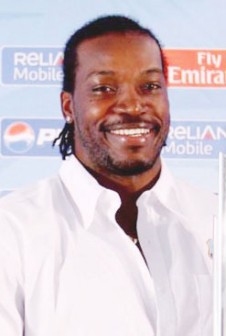
Players such as Ryan Hinds, Stuart Williams, Daren Ganga and Devon Smith in the domestic competitions, would amass significant runs, but then look completely out of their depths at international level.
At the time of the 2009 players’ strike, signs had emerged that for the first time in a decade and a half, the pendulum was potentially shifting, and a well balanced West Indies team was in the making.
Ramnaresh Sarwan had the series of his life at home verus England in 2009 (626 runs at an average of 104, including his highest test score of 291).
Gayle’s early tenure as skipper was spurring him to improved batting performances and his average as skipper was almost 10 points higher that his overall career average in the three years he was in charge.
Finally Chanderpaul, who had emerged as the best batsman in the side following Lara’s retirement and was once ranked number one in the World, was getting the consistent support from these two senior batsmen in the post-Lara retirement era.
Fidel Edwards and Taylor with their impressive bowling in South Africa 2007/08 seemed to have finally adapted to test cricket raising hopes that they could be the new-ball pair that the West Indies had been looking for since Ambrose/Walsh.
Later Kemar Roach’s emergence on the world stage in Australia when he had the great Ricky Ponting in all sorts of problems, further gave hope that a potential lethal Windies pace attack in the mould of one Clive Lloyd, was about to be unleashed on the World’s best cricketers again.
Trinidad connection
Then there was the Trinidad connection. Trinidad had emerged as the alternative for those cricketers who were no longer able to ply their trade in the former Mother Country, England.
Their disciplined and organised local cricket structure which was of a semi-professional nature, had seen the emergence of a number of superb young talents the likes of Adrian Barath and Darren Bravo, the latter, whose likeness to the Lara is uncanny to say the least.
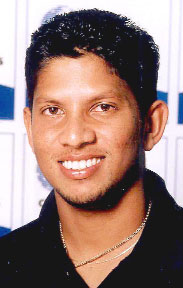
It was no wonder then that Trinidad had a fairy tale ride at the inaugural Champions Trophy League in India where a certain player named Keiron Pollard rose to fame.
Then there was the re-emergence of two other Trinidadians for different reasons in Lendl Simmons and Ravi Rampaul.
Rampaul’s comeback after being out of the game for so long is a testament to his character and shows that there are players who have the desire to work hard at their game to help West Indies cricket climb back up the ladder while Simmons seems to be making the best use of his second chance.
Jamaicans too are not to be left out with the emergence of the extremely talented Andre Russell and the return of Marlon Samuels.
The cupboard of West Indies cricket is not bare as Guyana’s Devendra Bishoo has shown but Sammy’s continued presence as skipper suggests that he is really keeping out better players and upsetting the balance of the team, although it is not his fault.
He has been thrust into a position of authority and is simply and honestly just trying to do his job. But he himself must know deep down that he is not good enough to be a West Indian regular in any format of the game.
West Indian fans have been hurting for almost two decades now and finally this season the selectors have a pool of players with the potential to form a team with depth, experience, talented youths, penetrative bowling and stable batting .
That they have failed to do so, is as much a blemish on the Clyde Butts led selection panel as it is on the WICB whose CEO Ernest Hilaire seems not to understand that for the West Indian public, winning is everything.
This 2011 home season should have been the end of the agony in which regional fans gained renewed interest and excitement in the regional side’s fortunes.
Instead the team and fans alike are being held hostage frustratingly for totally non-cricket reasons, which one must argue are far more irritating than viewing the many series whitewashes and defeats that the Windies have suffered over the last decade or so.
The obvious solution is for the WICB and Gayle to bury the hatchet and for Gayle to take over the captaincy.
Of course cricket is a funny game and Sammy can prove all his critics wrong with stellar series coming-of-age personal performances and stand-out captaincy.
But for now the team is minus some of its best players and once again a series defeat looms.





